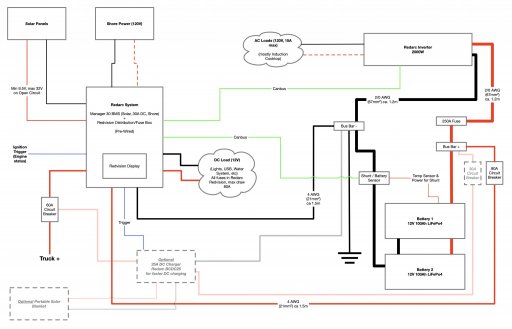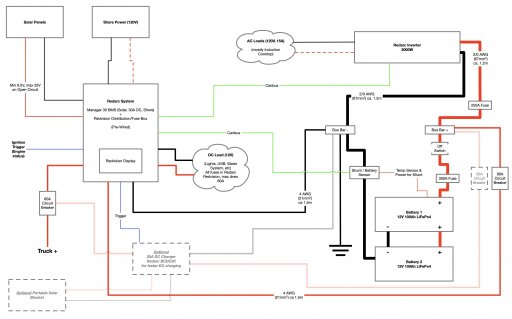Hi all,
I'm planning the electrics of my new rig, a Gladiator with Alu-Cab Canopy Camper. I came up with the below plan and would love some feedback on that.
Some background first:

I'm planning the electrics of my new rig, a Gladiator with Alu-Cab Canopy Camper. I came up with the below plan and would love some feedback on that.
Some background first:
- I'll be using a pre-wired GP-Factor Redarc system which includes Manager 30 BMS and Charger (Solar, Shore, DC), Redvision Distribution Box, as well as the Redvision display; this is already here, awaiting installation.
- Batteries will be two 100Ah LiFePo4 batteries with build in BMS as well as temperature protection and self heating.
- I have a 2000W inverter in the system, it has GFCI outlets which I'lll likely be using directly to plug in the appliances.
- The camper will get solar on the roof.
- General tips and tricks
- Correct wire gauges (I used the Blue Sea gauge calculator and generally went up in size, not down)
- Emergency Off button needed? If yes, where?





